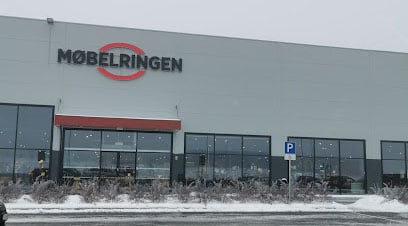Demand control ventilation (DVC) is a feature all sustainable buildings should have. Insufficient ventilation can have a detrimental effect on indoor climate, leading to poor inhabitant experience. Poorly ventilated buildings can shorter customer stays, lack of employee productivity, and make tenant unhappy.
On the other hand, excessive ventilation can increase even more, the already high energy consumption and CO2 production of buildings. It’s hard to maintain balanced ventilation configurations, when they have to be manually set. Especially if the footfall/occupancy of a building may change every hour. This is where demand control ventilation, with a well-defined sequence of operations, can save the day.
What (Really) is Demand Controlled Ventilation (DCV)?
Demand controlled ventilation (DCV) is a process designed to adjust/reprogram the ventilation settings within a building, based on the fluctuating occupancy. DCV systems can automatically reduce ventilation intensity during off-peak hours, saving a lot of energy in the process. They can also sense if the quality of indoor air is becoming polluted, and fix that by pumping fresh air faster into the building.
Typically, DCV is one of the many features that most smart ventilation systems offer. ClevAir is a software based solution that can optimize most HVAC solutions, based on changes in not only occupancy, but also indoor and outdoor climates, and weather forecast.
Related article: The Benefits of a Smart Ventilation System
Advantages of Installing Demand Controlled Ventilation Systems
There are many tangible benefits of installing a demand control ventilation system in your building. Here are a few:
Demand control ventilation savings:
An analysis of school buildings in the UK revealed that almost 50% of their electrical energy consumption was happening after the school day.
It’s quite natural for building occupancies to fluctuate during a day. Without DCV, the ventilation will always run on the same settings, even when the building is empty. With demand control ventilation however, there is a massive potential to make energy savings. ClevAir customers experience 15-25% reduction of the totalt energy consumption and CO2 emissions.
Protection against increasing condensation:
When the occupancy increases within a building, so does the relative humidity. If the ventilation settings aren’t tweaked to combat it, it may result in heightened levels of condensation, which can cause mold growth, damp walls, and musty smells. Demand controlled ventilation systems can sense different changes in indoor climate (humidity, temperature, CO2 levels) and reprogram the ventilation system accordingly.
Fresher indoor air with fewer allergens:
Air inside buildings that aren’t properly ventilated, can have high concentrations of allergens, chemical fumes, dust, and pet dander, among other pollutants. DCV can help significantly reduce indoor air pollution by continuously pumping the required amounts of fresh air into the building.
Read more about indoor climate and air quality
A competitive advantage:
Reduced energy spending because of DCV can allow you to afford even more expensive actions for å greener building with low CO2 emission.
How Do Demand Control Ventilation Systems Work?

The demand for ventilation is driven by occupancy and/or changes in temperature/weather. DCV systems are usually made up of two components: occupancy and/or temperature sensors, and a controller unit to communicate, either directly or indirectly, with the ventilation unit.
Here are a few of the many ways, a DCV may read occupancy and temperature data within a building:
- Space carbon-dioxide sensing: Some DCV systems have CO2 sensors spread across the building. As the occupancy increases, so do the levels of indoor CO2 (with more people breathing). The system can sense this and adjust the rate of ventilation accordingly.
- Occupant counting: Certain DCV systems rely on direct occupant counting, using techniques like ticket sales, security swipes, or video recognition etc.
- Occupancy sensing: Dedicated occupancy sensors can be used to check whether there is anyone within an area, or whether it’s vacant. ClevAir uses sensors measurering the CO2 level, humidity and temperature in the area, this information is used to optimize the HVAC securing a pleasant indoor climate without using too much energy.
- Thermal sensors: Some demand-controlled ventilation systems also monitor a building/space’s temperature to adjust ventilation when needed.
Installing Demand Control Ventilation Systems in Old Buildings
Installing demand control ventilation systems in new buildings should be easy, but can they work in older buildings too? The answer is yes. Modern DCV systems can integrate with even the older buildings, albeit sometimes after a retrofit.
ClevAir is one such example. It can be installed in old buildings, no matter of the building has BMS or not. It can integrate with most HVAC solutions, and optimize the ventilation based on changes in not only occupancy, but also indoor and outdoor climates, and weather forecast.



Comments
Add Comment